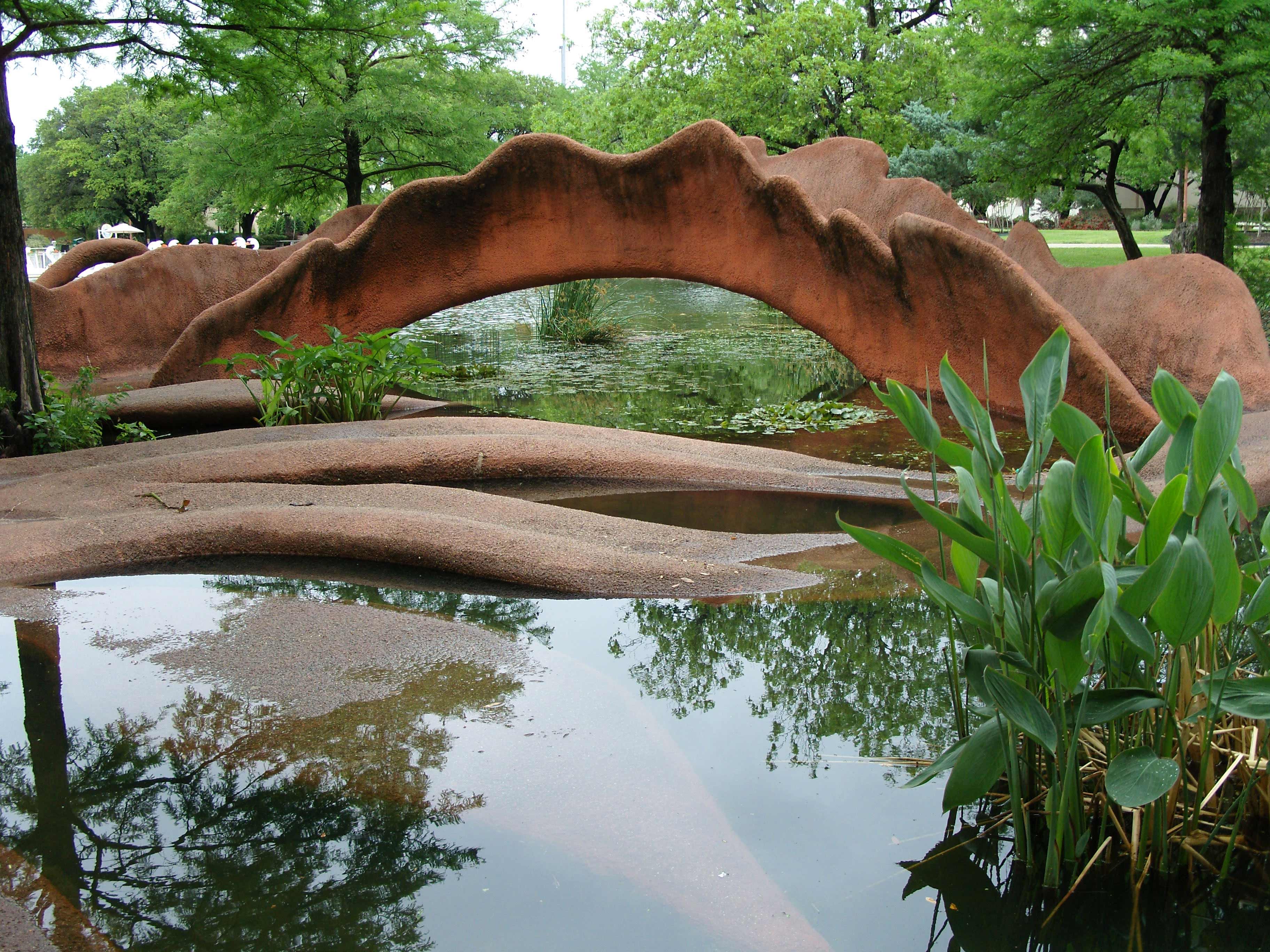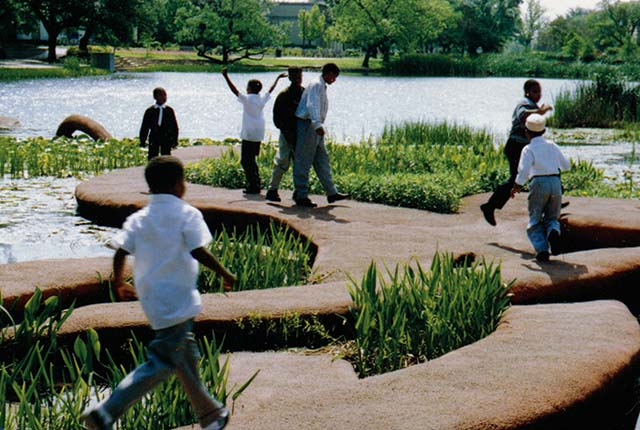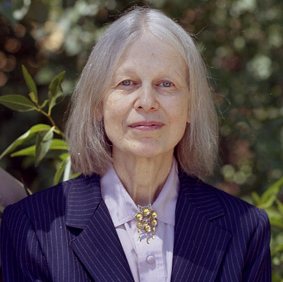Patricia Johanson is an environmental artist with visionary ideas for healing the earth through art. Her design for a deep body of water in Dallas, surrounded by major museums, transformed an eyesore into an ecologically balanced lagoon teeming with wildlife, where wetlands plants purify water, storm water is stored, and Pond Cypress Trees provide microhabitats and shade. Meandering pathways over water are shaped like native plants, and let strollers experience the harmony of nature through their senses, forming powerful personal connections to the living world. Johanson’s successful collaboration with scientists, engineers and community leaders has sparked a revolution in thinking about art and the environment.

Patricia Johanson, Fair Park Lagoon (1981-86) Site specific landscaping with native plants and gunite sculpture. Dimensions: approximately 5 city blocks. Collection: City of Dallas. © Patricia Johanson 2014. Courtesy of the artist.
Artist’s Statement:
Fair Park Lagoon is an early example of how aesthetic, social, and ecological benefits can accrue from functional infrastructure. The lagoon, a municipal flood basin, is framed as a pastoral park, whose focus is restoring ecological communities to an urban metropolis and using sculptural structures—paths, bridges, islands and causeways– to provide access to living nature. The landscape, itself, is “functional”—designed as a food chain where plants are meant to be eaten, and crustaceans, fish, turtles and waterfowl eat each other.

Patricia Johanson, Fair Park Lagoon (1981-86) Site specific landscaping with native plants and gunite sculpture. Dimensions: approximately 5 city blocks. Collection: City of Dallas. © Patricia Johanson 2014. Courtesy of the artist.
The lagoon is not merely decorative, but part of the flood control system for the Trinity River. Ironically, this engineered aspect— a detention basin and weir that releases floodwater gradually—contributes greatly to the aesthetics, as sculptural patterns are constantly reconfigured by fluctuating water levels. The engineering also helps people visualize natural processes, especially when the art is submerged following a rainstorm. Fair Park Lagoon has had wide appeal because it is NOT anthropocentric. Needs of humans, wildlife, and infrastructure occupy the same footprint, as when paths are deployed to prevent erosion, and simultaneously configured as microhabitats. The lagoon frames humans as part of nature and fosters engagement with the biological world, facilitating a dialogue between natural and cultural processes.
Artist’s website: http://patriciajohanson.com
Read More:
Flood Control Is Art in Salt Lake City

